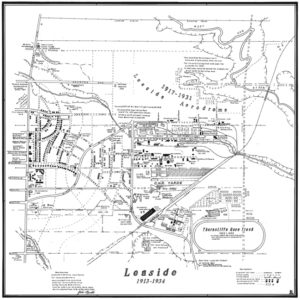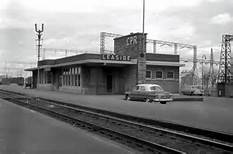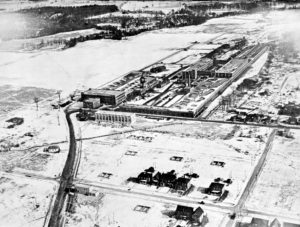May 22: OK Kiddies, pay attention. Today we have a history lesson and it will be on the exam.

Leaside is a relatively unique neighbourhood in the City. The land for its’ development (1,025 acres) was assembled by the Canadian Northern Railway in 1912. The railway retained Frederick Gage Todd, a student of Frederick Law Olmstead (who designed Central Park in New York, among other places), who then drafted a plan for residential neighbourhoods, commercial districts and industrial areas, all in support of a new railway yard and station in Leaside.
The plan was influenced by the design principles of the “Garden City” movement that emerged in Britain at the turn of the last century. The Garden City movement was promoted by Ebenezer Howard and others as a utopian model for the development of new towns.
British cities of that time were dangerous and horrible places to live. Living conditions were abysmal; there were virtually no social services; disease was rampant, the air and ground were polluted. Like all megalomaniac City Planners, the Garden City proponents believed that a well-designed living environment would lead to a healthier and happier populace. Their prototypical cities were designed with separate residential neighbourhoods mixing a range of housing forms. Broad curvilinear boulevards ran through the neighbourhoods and connected to the industrial areas. Homes and jobs were in balance and there were designated areas for shopping and city purposes. All of this was placed at a distance from the main city, and surrounded by permanent open space – hence “garden city”. This approach is foundational to much of the city planning thought of the 50’s and 60’s which sought to separate uses and create an “ideal” place to live. Don Mills is a classic example of that era.
Development of Leaside didn’t start until the 1920’s, and not all of the plan was realized. The key neighbourhoods and the industrial areas were put in place. As planned, Leaside was home to a major rail terminal and maintenance operation. The former locomotive shop has now been convert ed to a grocery store, and sadly, the station itself is long-gone but the railway remains a presence in the community. Other early industries included the Durant Motor Company, Canada Wire and Cable, and Sangamo Meters (who had a steam locomotive beside their factory as an emergency generator). Leaside was also a key provider of ammunition during the first World War, and is believed to be the landing point for the first air mail shipment in Canada.
ed to a grocery store, and sadly, the station itself is long-gone but the railway remains a presence in the community. Other early industries included the Durant Motor Company, Canada Wire and Cable, and Sangamo Meters (who had a steam locomotive beside their factory as an emergency generator). Leaside was also a key provider of ammunition during the first World War, and is believed to be the landing point for the first air mail shipment in Canada.

Almost all of the houses in Leaside were erected between 1928 and 1953. My home – the Garden Court apartments – were built in 1930. Three farmhouses that belonged to the original settlers (John Lea Jr., James Lea, and Thomas Elgie) remain in place. Several blocks of houses were built by the industries so that their employees could live close to the factory. Virtually the entire neighbourhood, including several apartment blocks, is two or three stories in height and presents a very modest and consistent appearance.
Many in the neighbourhood are correctly concerned about major redevelopment proposals along Eglinton Avenue, and a growing number of the older and small homes are being demolished to make way for “monster homes” that really don’t fit the character of the neighbourhood. So Leaside continues to evolve. We can only wonder what it will be like in the next 50 years.
Map by J. Naulls. For more information see: http://leasidematters.ca/